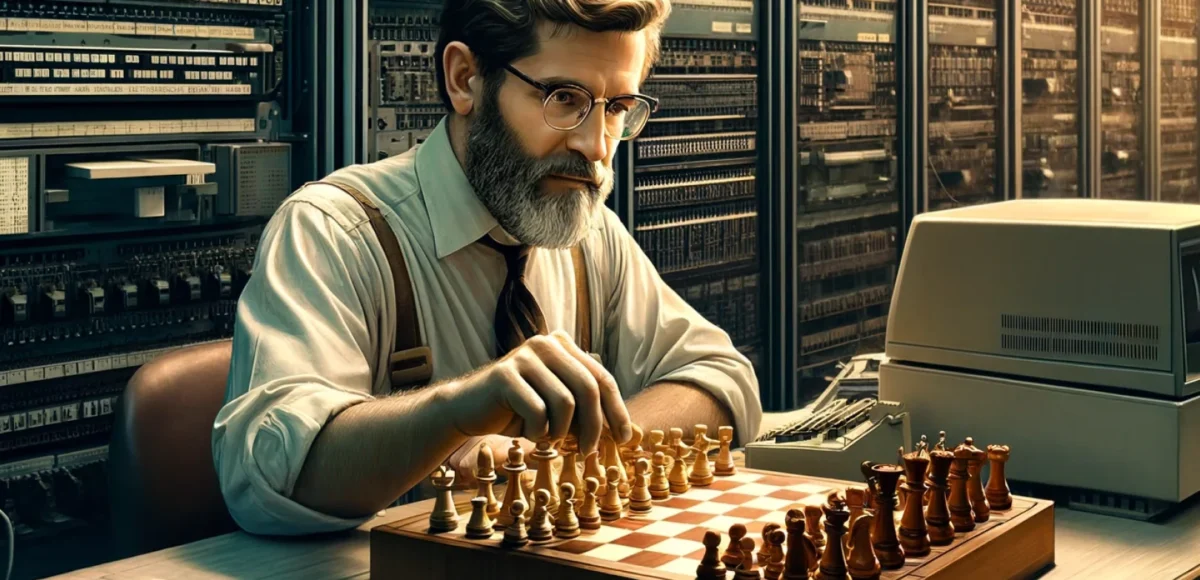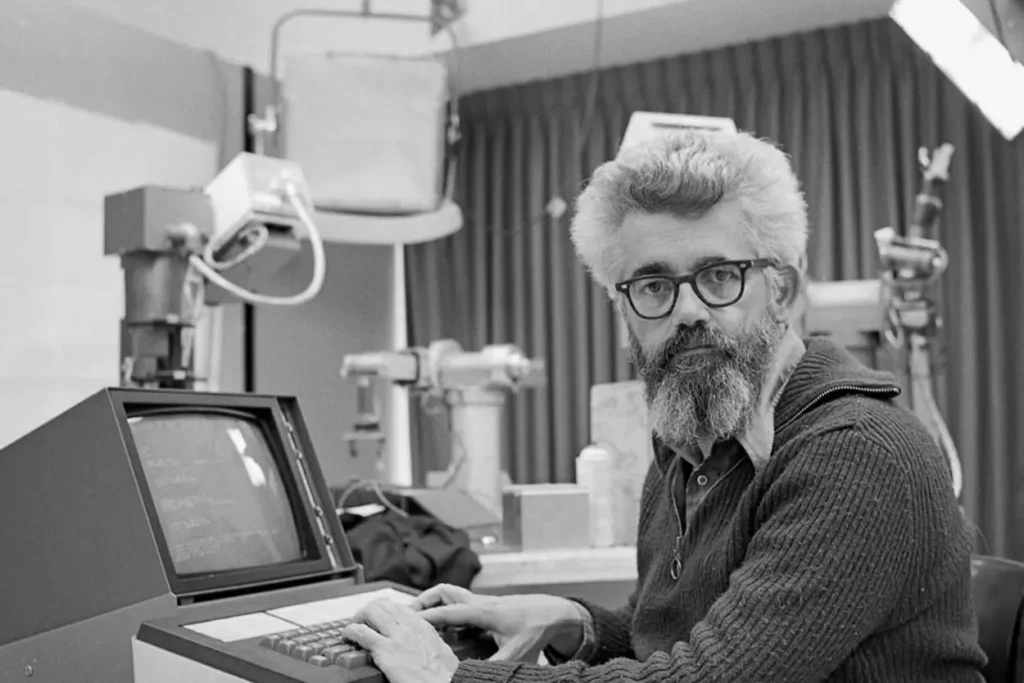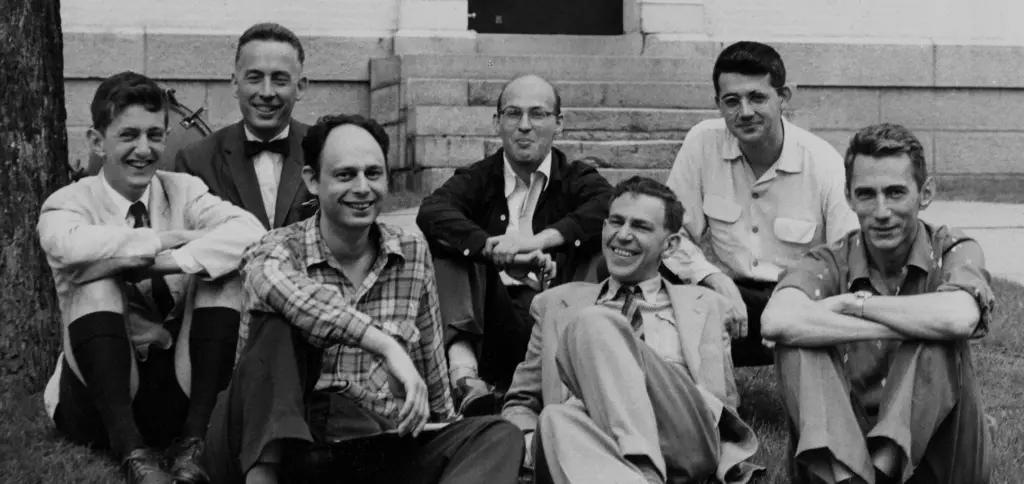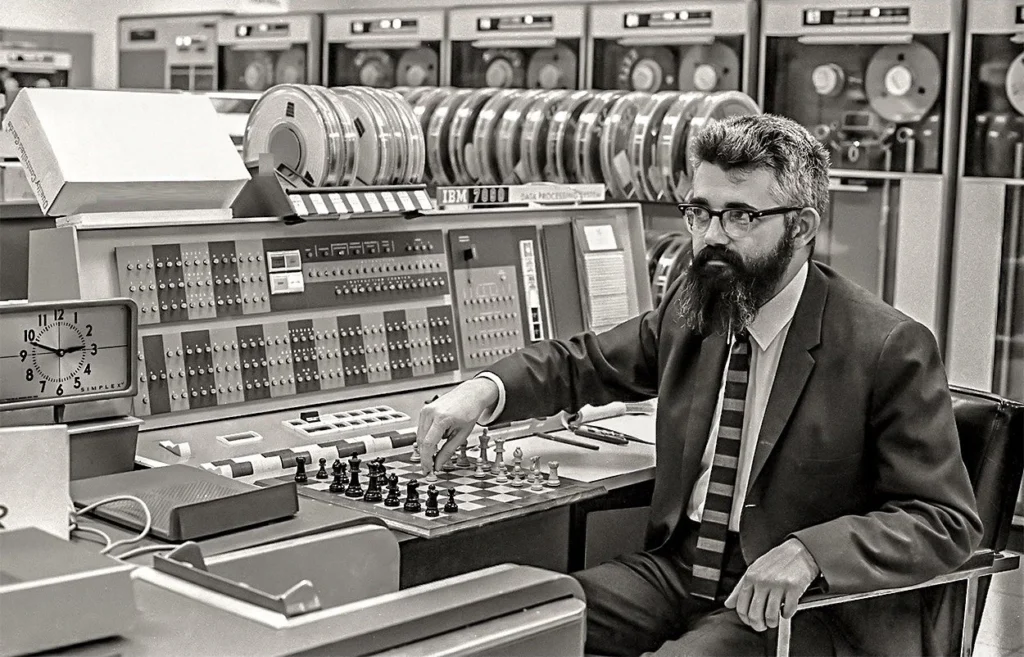
- 10 June 2024
John McCarthy: Pioneer of Artificial Intelligence
“He who refuses to do arithmetic is doomed to talk nonsense.” – John McCarthy
Artificial intelligence, a term once confined to laboratories and various fields of research, is now making its way into our daily lives. Today, we encounter AI in fighter jets, drones, cars, computers, and even mobile phones.
But how did it all begin? What is the story behind this technology that could profoundly impact societies in the coming years, potentially causing serious employment issues and crises, or perhaps solving long-standing problems and leading to prosperity? How can you be introduced as “Legendary” by Stanford University? In this article, we will meet John McCarthy, the inventor of the term Artificial Intelligence.

Born in Depression and Shaped by War
John McCarthy was born on September 4, 1927, in Boston, Massachusetts, to an Irish father and a Lithuanian mother. The Great Depression deeply affected his family, causing them to move frequently during his early years. Later, McCarthy’s father found a job in Los Angeles, California, relieving the family from financial difficulties.
John’s parents were active members of the Communist Party, encouraging learning and critical thinking, and placing significant importance on their children’s education. As a result, John was admitted to Caltech in 1944. He showed an early talent in mathematics and was even exempted from two years of math education. However, he was expelled for not attending physical education classes. During this time, the impacts of World War II were felt worldwide, and John served briefly in the US Army.
After his military service, he completed his Bachelor’s degree in Mathematics in 1948. His success during these years marked the beginning of a notable academic career. After completing his Master’s degree at Caltech, he earned his PhD from Princeton University in 1951 with a thesis on “Projection Operators and Partial Differential Equations.”
A Young Scientist at Dartmouth College
In the early 1950s, the concept of artificial intelligence was limited to high-level mathematical problems known by various names, such as Cybernetics, Automata Theory, and Complex Information Processing. These diverse conceptual orientations highlighted the field’s complexity.
At that time, a 28-year-old assistant professor of mathematics at Dartmouth College, McCarthy, decided to form a group to bring together ideas about thinking machines. He named this new scientific field Artificial Intelligence. He envisioned organizing a workshop to discuss AI with leading scientists in the field.
Although the idea sounded highly visionary at the time, the notion that thinking machines could one day exist was indeed anticipated, but practical implementation seemed centuries away. McCarthy faced some funding challenges for the workshop from the Rockefeller Foundation. However, the term Artificial Intelligence in the project proposal alone gained significant credibility for the workshop.

Initially expected to last two months with 11 participants, the workshop began in the summer of 1956 and lasted six weeks, with 47 scientists joining, including visitors and new speakers. In the top floor of Dartmouth College’s mathematics department, topics that are now well-known but were then only familiar to a group of visionary scientists were discussed: Natural Language Processing, Neural Networks, Computational Theory, Abstraction, and Creativity!
Thus, artificial intelligence entered the literature and, in a sense, our lives through this conference, with the young McCarthy naming a technology that could fundamentally change societies.
The Invention of the Server and the Foundations of Cloud Computing
By the late 1950s, McCarthy was not limited to AI. He began developing a programming language called Lisp, publishing his work in a 1960 paper. He proved that a programming language with Turing completeness could be created using a few simple operators and notation for anonymous functions borrowed from another mathematician, Alonzo Church. After 1960, Lisp became the preferred programming language for AI applications.
McCarthy did not stop there. By 1961, he proposed the idea of public computing during a speech at MIT. He argued that a computing resource could be shared among many tasks or users through time-sharing technology. This concept was later recognized by leaders in the field as the foundation of today’s servers, the internet, and even cloud computing.
According to Elaine Woo, although we continue to find different names for time-sharing, server, or cloud computing, this was ultimately a revolution initiated by John. Without it, the internet might not have emerged so quickly.
A Technological Inventor
In 1966, McCarthy and a team from Stanford University collaborated with their Soviet counterparts to develop a series of chess robots. McCarthy’s team lost two games and tied in two others. Known as the Kotok-McCarthy program, this was the first computer program to play chess convincingly.
By the 1970s, McCarthy began working on the Circumscription Method of Non-Monotonic Reasoning, continuing these studies until 1986. In 1979, he published a paper discussing intriguing ideas for his time. In “Ascribing Mental Qualities to Machines,” he argued that people tend to evaluate machine behavior as intelligent and conscious and defended the necessity of this evaluation. However, he also argued that intelligence and consciousness are different, and even if we had intelligent machines, they would not possess consciousness.

John McCarthy spent his final years as an emeritus professor at Stanford University. He passed away on October 24, 2011, leaving behind a profound scientific legacy. He was honored with numerous awards, including the Turing Award in 1971, the Computer Pioneer Award in 1985, the IJCAI Award for Research and Excellence in the same year, the Kyoto Prize in 1988, the National Medal of Science in 1990, and the Benjamin Franklin Medal in 2003. In 2012, he was named one of Stanford’s Engineering Heroes.
John McCarthy’s life and work are remembered as a turning point that revolutionized the scientific world. The great genius who laid the foundations of artificial intelligence will be forever remembered for his contributions to the development of computer science. Known as the father of AI research, McCarthy continues to live on as a legend in the scientific community.
Don’t forget to follow us on our social media accounts!



